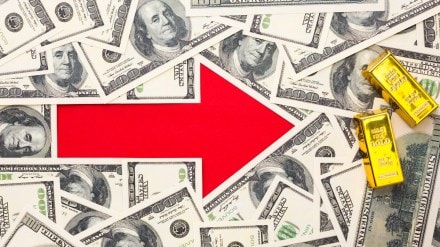It seems like there is no stopping the FII selling. Despite the whopping Rs 3 lakh crore plus outflow in 5 months, foreign institutional investors continue to sell further. The question that’s on everyone’s mind is when will FII selling stop and what can bring about the return of the FIIs to India? Well, most market observers believe that a complete halt in FII selling is unlikely in March but may happen later this year. They are hoping that the tide could turn by the second half of 2025 or Q2FY25.
Four reasons that could signal return of FIIs in India
There are four key factors that can decide on the pace and extent of the slowdown in the FII selling in the near-term and possibility of reallocation of FII money in Indian markets-
Tariff impact on US economy
The deliberations about reciprocal tariff is picking pace but an equally pertinent question is how will the tariffs impact the US consumers and the US economy. Most recent studies and expert views have pointed out the risk of inflation is increasing as the domestic prices in the US are set to see around 5-10% hike as a result of the new tariff structure announced by the Trump Government.
Market veteran Arun Kejriwal pointed out that, “All these tariffs being imposed, it means goods of common usage and consumption by the masses will become expensive in the US. Trump, with these, is going to make the common man pay more for monthly expenses. This inflation is going to hurt the US. So any rate cuts in the near future, next six months, could be ruled out.”
State of US markets- Can it signal return of FIIs to India?
The possibility of a correction bout in the US is another key deciding factor. The US Fed chose to hold rates steady in the first meeting of 2025. It also indicated that the “strong economy and renewed rise in inflation could prompt the Fed to raise rates again in 2025.” This according to most market observers is an important cue. They believe any correction in US markets could trigger allocation to EMs. “If the US economy shows any signs of a decline or challenges to growth outlook emerge as a result of these tariffs, one must watch out for the impact. FIIs may then allocate some funds back in Emerging Markets. The US Fed has indicated the risk of inflation is rising and raised growth slowdown worries too. Many corporates in US have also highlighted the lack of growth visibility,” explained Siddhartha Khemka, Head – Retail Research, Motilal Oswal Financial Services
Arun Kejriwal added that, “the profits that the world earns and the market cap in America are no longer in sync. What I mean is one-third of the profit comes from American companies, but they have two-third of the valuation of global companies. This disconnect has to be corrected sooner than later, and it may start happening as early as March. You could see American markets correcting from their all-time highs going forward. Assuming that happens, you have one market of choice, China, because China seems to be undervalued currently. And second is India. Within India, I want to highlight that opportunity lies in the large cap.”
Dollar Index hovering near $104 levels
One of the key developments since Trump’s coming back to power is the gradual strengthening of the dollar. The dollar index had hit a high of 110 in January, 2025. However, prices have come down significantly and the dollar Index has plunged 5.5% to 104 levels. In fact, the greenback has declined over 3.5% in the past four days and is down almost 2% on Thursday, March 6. This marks the worst 4-day stretch for the US currency since November 15, 2022 as per Dow Jones Market data.
Pickup in India’s earnings trajectory
Market experts say that the return of FIIs in India is dependent on two simultaneous development- challenges for the US economy coupled with a pick-up in the earnings trajectory of Indian companies. Siddharth Khemka explained that “FII selling is likely to continue for some time. I would rule out complete halt in March. Meaningful FII buying can be seen consistently when we see Indian markets stabilizing. Maybe in 2-3 months after complete clarity on tariffs emerges. The new tariffs are expected to hike consumer prices by 10-20% at least. This is also likely to coincide with the time when earnings and growth back home may see slight pick up. This may lead to return of FII money by Q2 of FY26 or second half of 2025.”
